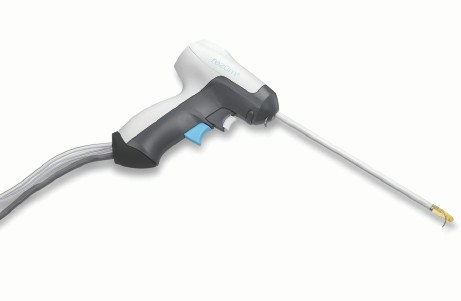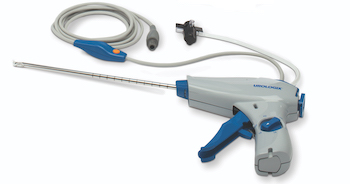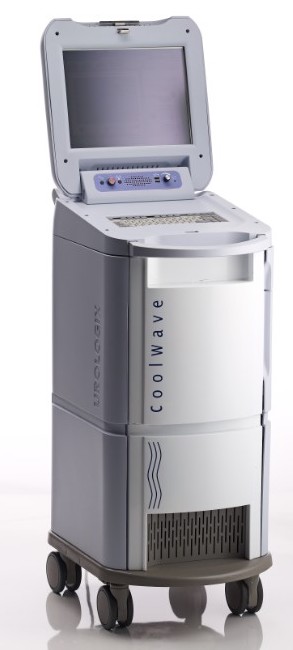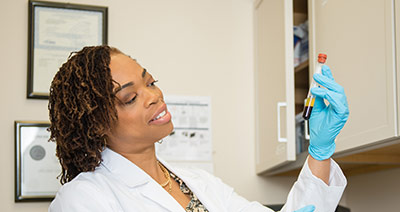Minimally Invasive Office BPH Procedures
Click Here to Watch an On-Demand Webinar on BPH with Dr. Engel
We generally view minimally invasive office procedures as the next logical step in the progression of BPH treatments when medicines fail or have side effects that preclude their use. Typically, a man first comes to learn that his obstructive BPH symptoms are a normal part of aging, and almost always not a sign of something terribly wrong or worrisome. If symptoms progress, we start medicine either at the patient’s suggestion of an herbal remedy which typically has little efficacy, or by our suggestion of a medicine to relax the base of the bladder and the prostate or a medicine well suited to large prostates designed to shrink the prostate. Many men will be satisfied with this and will stay with this medical management. However, BPH is a progressive problem, and there typically comes a time when symptoms progress through medicine. For these men, or for men where medicine did not work for them, or in men who would simply rather “fix” their problem and not be on a chronic medicine that only holds the symptoms at bay, the next step is to consider a procedure. Few men when offered a minimally invasive office procedure will look to skip this step and move on to more aggressive operating room procedures, but a few do. Also, when more serious problems have developed due to BPH such as chronic infection, urinary retention requiring a catheter, bladder stones, or even kidney failure, more aggressive surgeries are the only option. Here we will discuss only minimally invasive office procedures.
We feel that the main advantages of this class of procedures are their ease of performance, the ability to do them in the office under local anesthesia only and thus the avoidance of general anesthesia, a low complication rate and risk profile, and an improvement in symptoms that far surpasses what is typically seen with medicine. Some Urologists will offer these procedures in surgery centers or hospitals, but we feel that this defeats the main advantage of this class of procedures, so, at Urologic Surgeons of Washington, we offer these nearly exclusively in the office and have found this practice to be extremely well tolerated.
TUIP / Trans-urethral Incision of the Prostate
Many treatments in this group have come and gone, but below will be a discussion of the most popular office procedures in use today, and their evolution. The first attempt at offering a less invasive procedure than the gold standard, the TURP, was called a TUIP or trans-urethral incision of the prostate. Here, two incisions are made through the prostate only. It is less invasive, but still required anesthesia and did not produce acceptable long-term results. Procedures such as variations on balloon dilation of the prostate came and went, as did stenting of the prostate. The first office procedure that was popularized was microwave therapy; however, that procedure faded as its efficacy came into question due to the need to use a low power at the time due to safety concerns. Efficacy was very poor with initial versions of the microwave, and it was applied liberally. This created a negative view amongst some Urologists initially regarding office procedures.
REZUM
 As happens with all procedures over time, modifications are made. The REZUM procedure is in essence an evolved version of the TUNA and is identical to a TUNA procedure in its concept in that it is done using a scope in the office and heat is applied to strategic points in the prostate. The only difference here is that water is applied to the needle that generates heat thus producing steam. Just as when one uses steam with an iron on a shirt, this causes the heat to be more intense and theoretically more widespread. The procedure from the patient’s point of view is similar between the REZUM as the TUNA, and patients will go home with a catheter for a few days with both procedures. However, the REZUM is far quicker, taking only 1 or 2 minutes to perform. Dr. Engel has found this to be an enormous advantage to the patient. There is still the same side effect profile as with the TUNA. There is the same small risk of urinary retention and infection.
As happens with all procedures over time, modifications are made. The REZUM procedure is in essence an evolved version of the TUNA and is identical to a TUNA procedure in its concept in that it is done using a scope in the office and heat is applied to strategic points in the prostate. The only difference here is that water is applied to the needle that generates heat thus producing steam. Just as when one uses steam with an iron on a shirt, this causes the heat to be more intense and theoretically more widespread. The procedure from the patient’s point of view is similar between the REZUM as the TUNA, and patients will go home with a catheter for a few days with both procedures. However, the REZUM is far quicker, taking only 1 or 2 minutes to perform. Dr. Engel has found this to be an enormous advantage to the patient. There is still the same side effect profile as with the TUNA. There is the same small risk of urinary retention and infection.
Initially, Dr. Engel was left with the impression that the Rezum was more painful to the patient, and it was noticed that it was a bit harder for patients to urinate after the two-day catheterization period. However, Dr. Engel has developed his own modified method of numbing the prostate that he has found extremely effective. Also, rather than extend the catheterization time, Dr. Engel will at times teach patients self cath which is usually only necessary for a few days if ever. By now, Dr. Engel is also extremely experienced with REZUM as well as TUNA and has made the appropriate modifications that have now made the REZUM experience as simple and easy as with the TUNA. Initially, comparisons within the Urologic Surgeons of Washington practice are suggestive of a higher success rate with REZUM than TUNA and will be followed closely.
Dr. Engel will still offer TUNA/PROSTIVA as an excellent procedure for situations where a slower heating process may lead to a minimized risk of urinary retention. This typically may be an older patient, a patient with a higher degree of pre-procedural urinary retention, or a large prostate.
TUNA / Trans-Urethral Needle Ablation
 The first procedure to become popular and show excellent 75-80% efficacy with approximate five-year durability was the TUNA, or trans-urethral needle ablation of the prostate. Here, just like with the microwave, heat is applied to prostate tissue with the idea that the tissue will then wither and retract over a few months’ time. Dr. Engel has performed over 1000 of these procedures over the past 15 years, with Dr. Engel being perhaps the most experienced in the entire region. The TUNA generally takes only 15 minutes to perform and has an extremely low complication rate. It produces 75-80% success rates as long as the prostate anatomy is ideal. Impotence and incontinence are nearly unheard of, as is infection. It does carry with it an approximate 20-30% likelihood that a man will report decreased semen output during ejaculation. We have found that by the time our patients have decided to move on to an office procedure, they already report decreased semen output either due to the medicines they are taking for BPH or the simple fact that men with BPH tend already to have low semen output. For this reason, we have generally not experienced this to be a significant drawback of the TUNA. The TUNA eventually was renamed PROSTIVA but both names are interchangeable amongst Urologists.
The first procedure to become popular and show excellent 75-80% efficacy with approximate five-year durability was the TUNA, or trans-urethral needle ablation of the prostate. Here, just like with the microwave, heat is applied to prostate tissue with the idea that the tissue will then wither and retract over a few months’ time. Dr. Engel has performed over 1000 of these procedures over the past 15 years, with Dr. Engel being perhaps the most experienced in the entire region. The TUNA generally takes only 15 minutes to perform and has an extremely low complication rate. It produces 75-80% success rates as long as the prostate anatomy is ideal. Impotence and incontinence are nearly unheard of, as is infection. It does carry with it an approximate 20-30% likelihood that a man will report decreased semen output during ejaculation. We have found that by the time our patients have decided to move on to an office procedure, they already report decreased semen output either due to the medicines they are taking for BPH or the simple fact that men with BPH tend already to have low semen output. For this reason, we have generally not experienced this to be a significant drawback of the TUNA. The TUNA eventually was renamed PROSTIVA but both names are interchangeable amongst Urologists.
Urolift
The most heavily marketed new office procedure for enlarged prostate symptoms is called the Urolift. With this scope based device, rather than heating the prostate tissue to allow for better urine flow, permanent sutures are fired from inside out through the sides of the prostate and then tightened. This produces more of a mechanical holding open of the prostate to achieve better urine flow. Because the results are immediate, many Urolift procedures will be done such that the patient is not sent home with a catheter, and typically there is little risk of decreased semen volume after the procedure. At Urologic Surgeons of Washington, we have also tested this method as well and seriously considered it as our main office procedure.
What we found however is that this procedure is not truly applicable to all prostate anatomies (poor when a middle lobe is present as it often is), we feel that leaving permanent foreign bodies in the prostate lends itself to potential future infectious complications, and we also note that there is the rare but ever present risk of major complication when the sutures produce bleeding in the pelvis called a pelvic hematoma which requires hospitalization and potential transfusion. It is also noteworthy that not all patients will not require a catheter. It is for these reasons that we have not felt comfortable offering Urolift as our main office modality at this time, and it has not supplanted REZUM or TUNA/PROSTIVA as the safest, most universally applicable BPH procedure that we offer at Urologic Surgeons of Washington.
Microwave Thermotherapy
 One other modality deserves mention here and is used by Dr. Engel for very occasional cases under specific circumstances. The latest version of microwave thermotherapy, called Cooled Thermotherapy, is very helpful in the specific situation where an elderly man has a very large prostate that under unrestrained circumstances would require a more aggressive surgery such as a TURP or Robotic Simple Prostatectomy. Such men usually are retaining large amounts of urine in their bladder, and perhaps are catheter depended or suffer from chronic infection. Microwave Thermotherapy has been proven very useful in these patients who are too high risk to take to the operating room and give general anesthesia to in getting them out of urinary retention and ending their need for a chronic urinary catheter.
One other modality deserves mention here and is used by Dr. Engel for very occasional cases under specific circumstances. The latest version of microwave thermotherapy, called Cooled Thermotherapy, is very helpful in the specific situation where an elderly man has a very large prostate that under unrestrained circumstances would require a more aggressive surgery such as a TURP or Robotic Simple Prostatectomy. Such men usually are retaining large amounts of urine in their bladder, and perhaps are catheter depended or suffer from chronic infection. Microwave Thermotherapy has been proven very useful in these patients who are too high risk to take to the operating room and give general anesthesia to in getting them out of urinary retention and ending their need for a chronic urinary catheter.
There will surely be new office treatments coming later for enlarged prostate symptoms, and many have come and gone. But for now, our go to office procedure is the REZUM and at times the TUNA/PROSTIVA for the reasons mentioned above. We offer and can perform all of the above treatments, and are happy to discuss what is right for the individual patient in each case.





